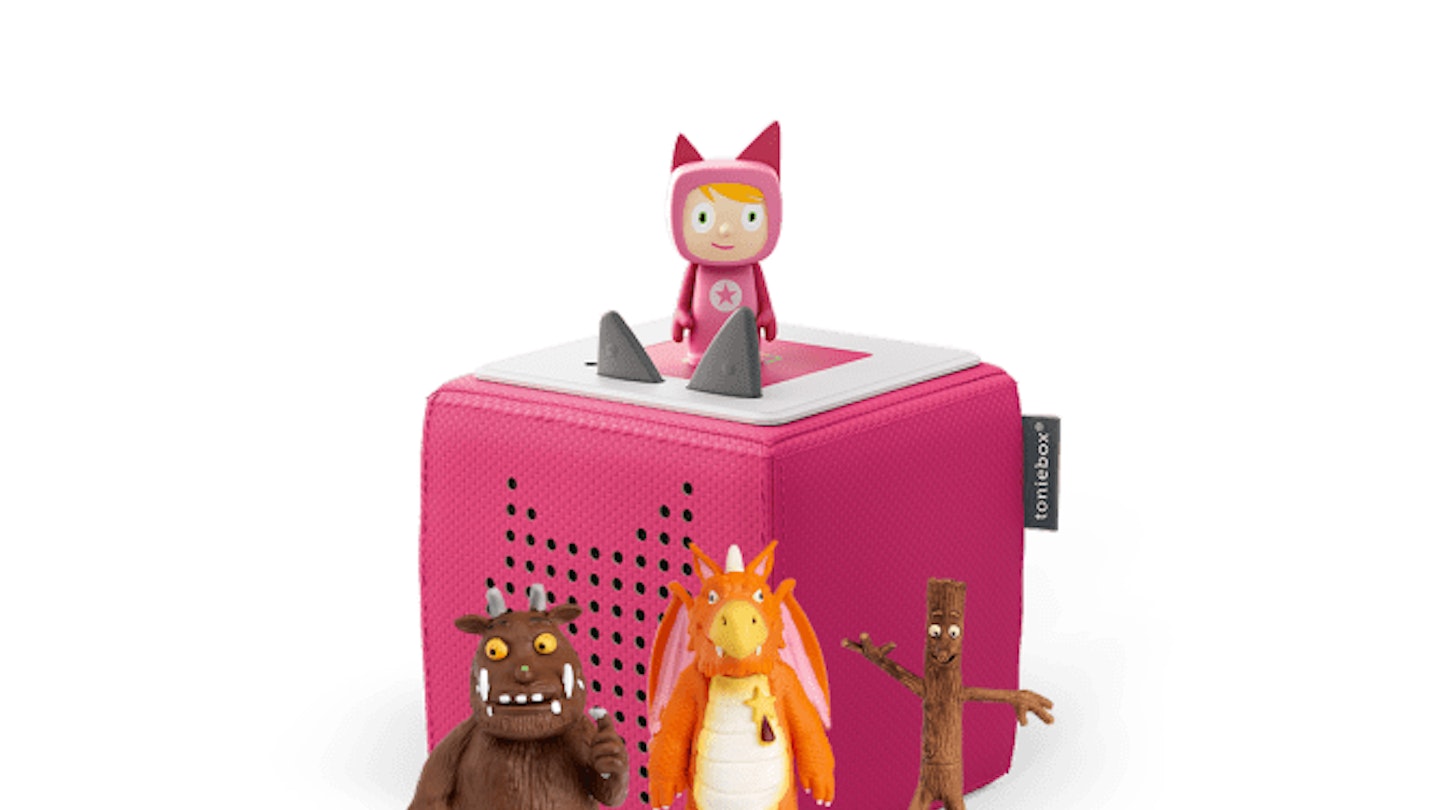Christmas is (like it or not) around the corner, so if you can get out the crystal ball and guess what your kids might be asking for from Santa this year, it could be worth taking advantage of some Amazon Prime Day deals while they're available.
If you were thinking of buying a Toniebox for your child this year for a Christmas or birthday anyway, now could be a good time. The boxes are part of a so-called 'lightning deal' which means the bundle is currently 20% off.
The Toniebox is a box which plays stories for your kids when they place the story characters (or Tonies) on top. It makes a great present for a child who finds it hard to settle at night. It's a hit in our house where my son uses the box most nights to listen to some of his favourite Julia Donaldson books, or dinosaur facts.
Amazon Prime Toniebox Sale
 1 of 2
1 of 2Toniebox with Julia Donaldson Bundle
This bundle includes a Toniebox and three Julia Donaldson books - The Gruffalo, Zog, and Highway Rat.
 2 of 2
2 of 2Vakdon Bag for Tonies figures
This carry bag for all your kids' favourite characters is also on sale now.
As the Toniebox is so helpful for sleep, expert Lucy Wolfe, working with Toniebox has previously given this advice on getting a better bedtime for your kids...
Sleep is so important for young children’s overall health, wellbeing and development, yet many parents face an uphill battle settling their little ones down to sleep every night.
The combination of increased anxiety, more screen time and less experience of ‘normal’ day-to-day life has wreaked havoc on children’s sleep routines, so teaching children to sleep well has never been more important. tonies®, the leading children’s storytelling audio device company, is working with sleep expert Lucy Wolfe to bring parents some top tips on promoting positive habits that will set children up for healthy, restful sleep throughout childhood and beyond.
Be mindful of screen time
Many parents have understandably been relying on more gadget and screen time to keep children occupied when working from home and with a lack of alternative activities over lockdown. Now that restrictions are relaxing, it may be a good time to look at the amount of time children are spending on their devices and potentially rein this in as much as is practical for your lifestyle.
For improved sleep, it’s recommended that children avoid using their devices in the hour before bedtime as it can stimulate the brain and prevent the production of the sleep hormone, melatonin. Lucy also advises balancing screen time with activities like outside play.
The ideal bedtime might be earlier than you think
Often the key problems with sleep in young children involve them not being able to fall asleep, or not being able to stay asleep through the night. One barrier to that might be that bedtime is too late – children who don’t tend to be great sleepers would benefit from an earlier bedtime than most people would think. Parents may be doing a 7.30pm bedtime, which would be totally age appropriate on paper, but if your child has been awake for three hours overnight the night before, then they may benefit from an earlier bedtime. We know from studies that earlier bedtimes typically promote longer overnight sleep, so if parents are looking to help children sleep better, earlier bedtime is definitely worth considering.
Building a relaxing bedtime routine is key
A bedtime routine is the cornerstone of a positive sleep practice. Setting the tone with a dimmer, quieter environment can help to stimulate melatonin production. It’s also important to build the emotional connection aspect of the bedtime routine - even 20 minutes dedicated to lots of physical content and eye contact can build lots of emotional scaffolding to help your child feel safe and relaxed. Stories are also a quintessential part of the bedtime routine: through reading, telling them stories, or listening to the Toniebox together, stories can foster real connection between you and your child. Any low impact, high connection activity can work as part of a bedtime routine: puzzles, spot the difference, and even a game of dominos can all work. The important thing is having that safe, secure, emotional time together before you are separated when it’s time for sleep.
Give children ownership of their bedtime routine
Beyond the age of two or three, it can be helpful if children have a sense of ownership of their own sleep, so that they are invested in their own ‘sleep happiness’. Making them part of decisions around bedtime and allowing them to feel like they are in control of the situation can be a great way to handle this. Present them with lots of choices: do they want to hold hands going up the stairs? Which story do they want to listen to? Which pyjamas do they want to wear? With stubborn sleepers, it can be useful to discuss these decisions early in the day, so that they have the opportunity to look forward to bedtime as an opportunity for them to have autonomy.
Be consistent
Unpredictable responses from parents overnight can often lead to more night-time activity. So, for example, the first couple of times your child wakes up in the night, you might just resettle them. However, if then after two or three times you let them come into your bed, or you get into bed with them, you're inadvertently promoting the waking by changing the goalposts as the night unfolds. Try to stand your ground as much as possible, ensuring that you give them the same message and take the same action each time.
Don’t be hasty in eliminating naps
Often parents - in an effort to help children sleep better overnight – might remove daytime naps prematurely. This might result in two weeks of great overnight sleep, but slowly the quality of sleep may start to degrade. Generally, most children benefit from napping during the day up to about age three, and when they're ready to offload the nap, it’s important to retire the nap gradually rather than abruptly removing it from the daily routine. Cut naptime little by little to promote an easier bedtime – this might take place over a period of a few months. Lucy also emphasises the importance of a good nap-gap dynamic – the period of time between the daytime nap and evening bedtime – which she recommends should be around four to five hours, so timing both naptimes and bedtimes accordingly can be beneficial.
Make space for quiet time
When the daytime nap is eliminated, replace this with quiet time to continue to give your child the chance to slow down and stop during the day. This might involve laying on the sofa together and reading or listening to an audiobook on the Toniebox. It’s important to have this transition where you are moving away from the napping stage, but still want to promote a period of rest throughout the course of the day.
Don’t overanalyse it!
With so many devices like Apple Watches and FitBits out there, it’s easy to get bogged down in the facts and figures of sleep. The best way for parents to tell if their child is well rested is that they will act well-rested in their mood and behaviour and look well-rested in their appearance. If they don’t seem rested enough, that’s when you should begin to look at aspects like their screen time, their bedtime and diet. It’s important to look at these things as a whole, to ensure children are getting enough good quality sleep to be alert and fully awake in the daytime.
READ MORE: The Biggest Baby Sleep Questions, Answered By An Expert
READ MORE: Should You Feel Guilty About Your Kids’ Screen Time?
